Last month I was house-sitting in Semaphore, a lovely little seaside town North West of Adelaide, just past the Port. On a trip into the city, standing at the train station, I spied an old warehouse in the distance. It reminded me of my beloved Manchester with all its Northern grit and industrial revolution history. Since it looked a bit dilapidated and run-down it seemed an ideal candidate for the phenomenal “Renew” model (if slightly larger than their usual spaces).
Briefly for those who don’t know it, Renew started in Newcastle (NSW) when local hero Marcus Westbury* wanted to do something constructive with the empty High Street buildings. From this grew Renew Newcastle, a model that sits between landlords-seeking-tenants and artists/makers (and other sole traders) needing a space to make and share their wares. This movement was both so simple and so powerful that it has kickstarted several regionally-focused hubs, a centralised Renew Australia and created a buzz all over the world.
Despite supporting the independent creative sector from the ground-up in a more sustainable way than most subsidy models, Renew doesn’t get much of a look-in to traditional arts/culture funding. Multi-million dollar capital expenditure programs are all well and good, but believe it or not we don’t all lust after them. Getting policy developers to understand this is tough-talking. We’re lucky that Renew has raised such a stink about this in Australia, but there is still a long way to go.
So anyway, there I am, standing at the station, looking at this huge warehouse off in the distance, wondering ‘what is that space and how do I get in there to make something in it? Naturally, I tweeted my photo and mentioned it to Ianto Ware who runs Renew Adelaide (another local hero) and a few other folk. It seems I hit a nerve. Twitter told me that this was apparently “Hart’s Mill”, a complex that had been caught up in political wranglings between building developers and the local Port community for a few years. Of course the developers wanted to turn it into apartments and the community wanted to… well, do pretty much anything else that involved keeping it public. Right now there are all kinds of development plans under consideration for the Port area, and this building sits quite literally at the heart of them.
A couple of weeks later I was at Vitalstatistix for a preview of Ross Ganf/Torque Show‘s work-in-progress Farrugia (a verbatim dance theatre work based on Joseph Farrugia aka Madame Josephine). Since it was just round the corner I went for a better look at this property. These photos were taken at night on a cameraphone, but even in bad resolution the building complex is more gorgeous than I first imagined. My mind has been wandering ever since.
Over the last weekend, some members of the Port Adelaide Steering Committee were given access to the interior of the building. There are some stunning pictures on their blog. As these were shared on Facebook and people posted about how it would make a great exhibition space, or glossy, attention-seeking arts centre, it got me thinking. We don’t need glossy. We don’t need glass-facades and swanky architects. We need a basic cleanup, some safety precautions around things like exposed cables or massive holes in the floor, and we need to be left alone to build it as a creative community from the ground up.
So much money is spent on keeping buildings alive that there is frequently nothing left to make the art they are supposed to house. Don’t get me wrong, I love architecture, I love cultural history through physical environments and I don’t want to see any interesting building crumble to dust. But I love making and sharing new things as well. Sure, you can argue that these are two different things, that buildings receive more philanthropic contributions than government subsidy, and so are not taking from the core pot. Maybe, but it’s hard to look at major institutions without some envy when they receive all the glory of the new redevelopment from investors/philanthropists, plus government grants to bring in renowned international artists, when little-old-unknown-artist-run-initiative-over-there struggles to get a $5,000 grant to put on a local show.
Philanthropists will contribute to a $53million building upgrade because they get their name on a room somewhere. But just imagine what would happen if you spent something more like $3million on basic maintenance and patching and $50million on the activities that happened inside (and out!). We have our views of the status and values of culture completely skewed. I’m not religious, but in this so-called “city of churches” we have forgotten that it is the people who make The Church, not the arches above their heads.
Take local example Tuxedo Cat, now on to their third city-centre building (and currently ‘on-tour’ in Melbourne). Since this is one of the Renew Adelaide-supported initiatives I asked Ianto for some stats to compare… with the interesting response “the key thing about small venues-based creative industries is that no one has ever bothered to study them”. Still, here are the figures he quoted:
We gave them $7000 last year and, I think, $2500 the year before. The insurance bills this year alone were $4000, the compliance assessment $1500. I reckon it costs them at least between $30,000 and $50,000 to set up – which is less than the $80,000 Suzie Wong’s spent or the $280,000 Udaberri spent. The difference is the volume of volunteer labour. Udaberri hired an electrician, Tannon, Cass and I wired Electra House.
Like I said… We don’t need glass-facades and swanky architects. We need a basic cleanup, some safety precautions around things like exposed cables or massive holes in the floor, and we need to be left alone to build it as a creative community from the ground up.
For my tuppence, here’s a quick rundown of what I think the creative sector needs more of – and how I would love to see Hart’s Mill used (in no particular order):
- residential spaces – where creatives can live, cook, think and create together, away from their everyday lives, for anywhere from a week to a year;
- messy spaces – literally places that you can make a mess, splatter paint, build scenery, use power tools, throw projections with interactive physical objects… without fear of getting the walls dirty;
- other creative people – to brainstorm & bounce random ideas with, learn from, share their knowledge with (especially groups like Hackerspaces, communities of interest who provide a wealth of knowledge and resources for the love of geek);
- online open source and creative commons licensed spaces – cloud servers for data storage and exchange, social media communities for the sharing of events and resources; content hubs that can be remixed and repurposed; aggregated feeds from all the different people who make up the community (and not a swanky website that reinvents the wheel and wastes time in re-publishing material already in the ether);
- fully-configurable exhibition/performance spaces of different sizes, with moveable walls for maximum flexibility in the larger spaces, sprung floors for dance and physical theatre work, lighting grids, a decent cyclorama, blackouts/whiteouts and greenscreen draped areas for video and performance production;
- flexible seating for physical audiences that can be stored away when maximum space is required;
- at least one soundproof space for professional quality audio recordings;
- free, open, fat broadband (both cable and wifi since realtime, live data streams can’t function effectively on droppy wifi networks);
- direct fat bandwidth connection to other similar creative hubs around the country so that development and exchanges can take place regardless of location (what better use for the NBN?);
- access to some kind of basic kit for making/sharing – not everyone has their own equipment, so provide some cameras/recording/streaming gear; projectors/pa; edit facilities; software. Or even better, partnerships with technical companies who want to try new innovations so that instead of buying kit every few years, the best new stuff gets loaned as it comes out and everyone shares from the gained knowledge through experimental play at very low initial outlay;
- cheap public transport access so that makers and their audiences/participants can get there in person where relevant to see both work-in-progress and final productions;
- licensing laws that allow music to be played inside and out and alcohol to be sold on the premises so that public events can bring in a sustainable income of their own;
- a mandate that anyone moving in to posh new flats in the vicinity is not allowed to then complain about light/noise pollution and try to get the venue shut down (you moved there “because it’s cool now”. Get over it.);
- smart people who know about business development, the law, insurance (and all that other stuff that artists have to get involved with but usually hate) who are there on a pro-bono basis to help/advise/consult where required – artists frequently create innovation that can be monetised but usually couldn’t care less about the process of realising that value. Give them trustworthy partners, let some of the IP return to the space as re-investment in other work, and let the artists do what they do best (make) and the business people do what they do best (sell);
- and ideally some funding to help market, facilitate and realise some of the work (commercial or otherwise) that gets incubated there.
I’m sure over the years I will have ranted about a hundred other things that need to be considered in a space like this (I’ve been thinking about this for a long time). But for now, that’s a decent starting point to an open hub where creatives run their own domain. It should be based on openness, not control. I would love to see a community arts space like this run with the Occupy general assembly model that I experienced in New York last year. Everyone involved in that space at that time gets a vote on how it’s run, and everyone takes responsibility for themselves and each other (… can I hear a Mic-check?…).
So, my message to policy developers and philanthropists alike is “Go on, give us the above access and a million bucks of your pocket-change to get us going, and just watch what we can make happen”. I bet you’ll be amazed.
* Marcus is a long-standing troublemaker within the arts and culture scene in Australia. While a Novocastrian he launched the ongoing “This Is Not Art” (TINA) umbrella Festival, followed by Next Wave and its offshoot Freeplay in Melbourne. He made the ABC TV show “Not Quite Art” and is now Artistic Director of ISEA2013. Whenever there is a rumbling in the independent arts scene, Marcus is usually to be found as instigator or pundit. He’s certainly always someone I turn to when I want comment/opinion or a generally fun ranty debate.
Marcus is supported by Marni Jackson (currently the face of Newcastle tourism adverts!) at Renew Newcastle and by Ianto Ware (who spends far too much of his life reading and ranting about liquor licensing laws) at Renew Adelaide. They’re all excellent humans who work tirelessly (and are rarely remunerated) in the hope of creating better sustainable models for the independent sector in Australia. I thank them for their dedication, the world is a better place for them and people like them.

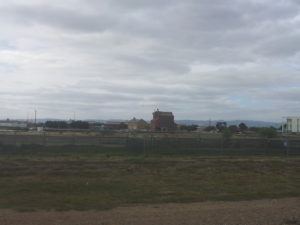
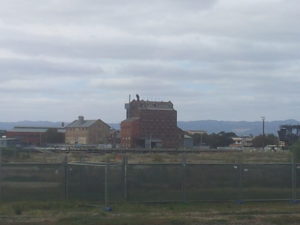
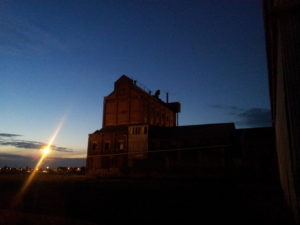
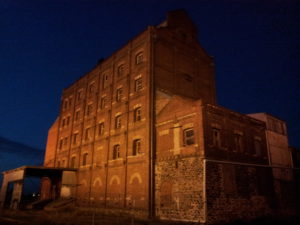
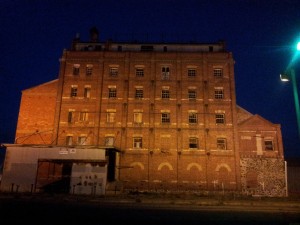
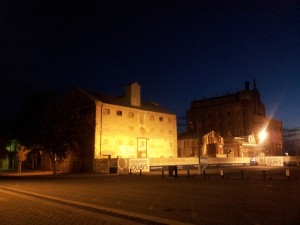
3 comments » Write a comment